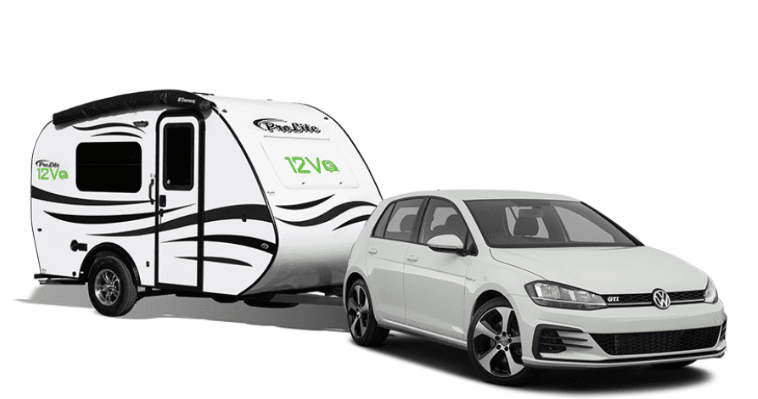Best Stove for Campervan: Top 7 with Must-Have Accessories
A camper van stove is essential for any campervan, allowing you to cook delicious meals and hot drinks during camping trips. Whether you’re an experienced campervanner or just starting, choosing the best stove for campervan can make all the difference in your camping experience.
This article will discuss the top picks for campervan stoves and five must-have accessories to help you get the most out of your stove. We’ll also discuss some factors you should consider when shopping for a campervan stove, so you can find the perfect one for your needs.
Table of Contents
The Best Campervan Stoves – Best Bang for Buck
Are you looking for the best camping stoves for your next camping trip? Look no further. We’ve compiled a list of the best campervan stoves that offer the best bang for your buck.
1. Duxtop Portable Induction 9100MC Cooktop

Fuel Source | Electricity |
Installation | Portable |
BTUs | N/A |
Burner Count | 1 |
Dimensions | 16.3 x 12.7 |
Weight | 5 lbs |
Price Range | Under $150 |
The Duxtop Portable Induction 9100MC Cooktop is one of the best camp stove on the market. This portable camp stove has an impressive 1800 watts of power and a BTU rating of 8400, making it a great choice for those who want to cook quickly and efficiently while camping.
The induction stove features 10 power levels and a timer, making it easy to adjust the temperature and time of your meal. Plus, its light and compact design make it ideal for taking on the road.
- The compact and lightweight design makes it easy to store and transport in a campervan
- Induction cooking is faster and more energy efficient than other stovetop options
- Easy to use and clean due to its smooth glass-ceramic cooking surface
- Includes 10 power settings allowing you to adjust the temperature accordingly
- Durable construction ensures it can withstand the rigors of camping
- It requires an electrical outlet to function, so it is unsuitable for use in remote locations.
- It cannot be used to bake or roast food as an oven can
- More expensive than traditional gas or electric stoves
- The induction technology may be unfamiliar to some users
- It can be difficult to find compatible cookware for induction cooking
3. Coleman 2-Burner Camping Stove
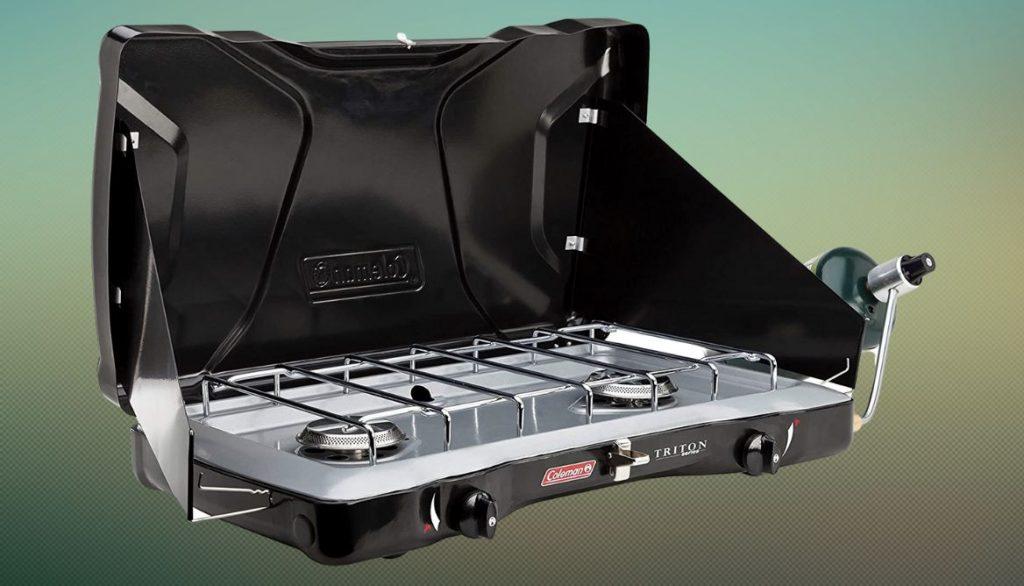
Fuel Source | Gas |
Installation | Portable |
BTUs | 22,000 |
Burner Count | 2 |
Dimensions | 22.9 x 13.8 |
Weight | 10 lbs |
Price Range | Under $150 |
The Coleman 2-Burner Camping Stove is a compact and lightweight cooking solution for campervans. It features an adjustable two-burner camping stove and an easy-to-clean surface.
Those Coleman stoves have an adjustable windscreen, a removable drip tray, and a separate storage case. They can boil one liter of water in just four minutes, making them an ideal choice for camping trips and outdoor adventures. This camp stove produces up to 20,000 BTU of heat, allowing you to prepare a variety of meals while on the go.
- The compact and lightweight design makes it easy to store and transport in a campervan
- Cooks two meals at once, making it ideal for groups
- It is designed to run on small propane canisters, which are widely available and easy to find
- The two burners provide more cooking space than single burner stoves, allowing you to cook multiple dishes at once
- The adjustable flame control allows you to adjust the heat output for greater control
- The Portable Camping Stove is easy to set up and use, making it ideal for novice campers
- Not ideal for large groups, as two burners may not be enough.
- It can be difficult to set up and may require additional accessories.
- Not as efficient as some other camping stoves due to its smaller size.
- It may be difficult to clean due to its small size and dual burners.
3. Camp Chef Everest 2 Burner Stove
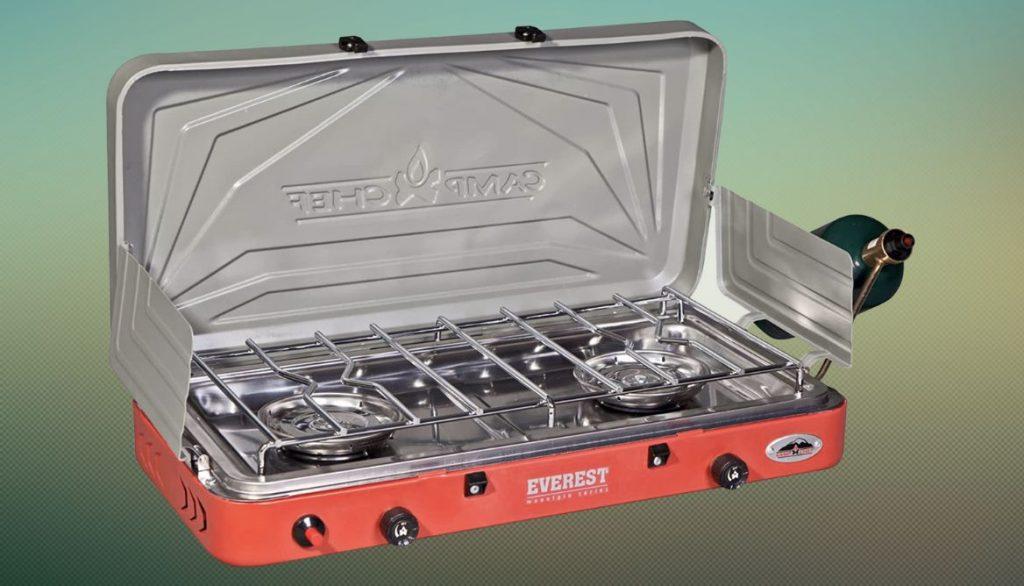
Fuel Source | Gas |
Installation | Portable |
BTUs | 22,000 |
Burner Count | 2 |
Dimensions | 13.5 x 23.5 |
Weight | 12 lbs |
Price Range | Around $150 |
The Camp Chef Everest 2 BurnerCampervan Stove is a portable stove designed specifically for campervan and RV cooking. It features two 22,000 BTU burners, a 3-sided windscreen, and an adjustable heat-control dial. It’s perfect for camping, tailgating, or outdoor cooking. The stove is made from durable stainless steel and is designed to be used with either.
- Lightweight and compact, making it easy to store and transport.
- Two burners provide plenty of cooking power.
- Dual-fuel compatibility allows you to use either propane or butane.
- Piezo ignition system makes lighting the burners easy and safe.
- Wind baffles help protect the flame from strong winds.
- The low profile of the stove can make it difficult to fit larger pots and pans.
- A fuel canister is not included with the stove.
- The burners may be too powerful for some smaller cookware.
- The stove is not designed for use in extremely cold temperatures.
4. Atwood Dometic D21-BPW
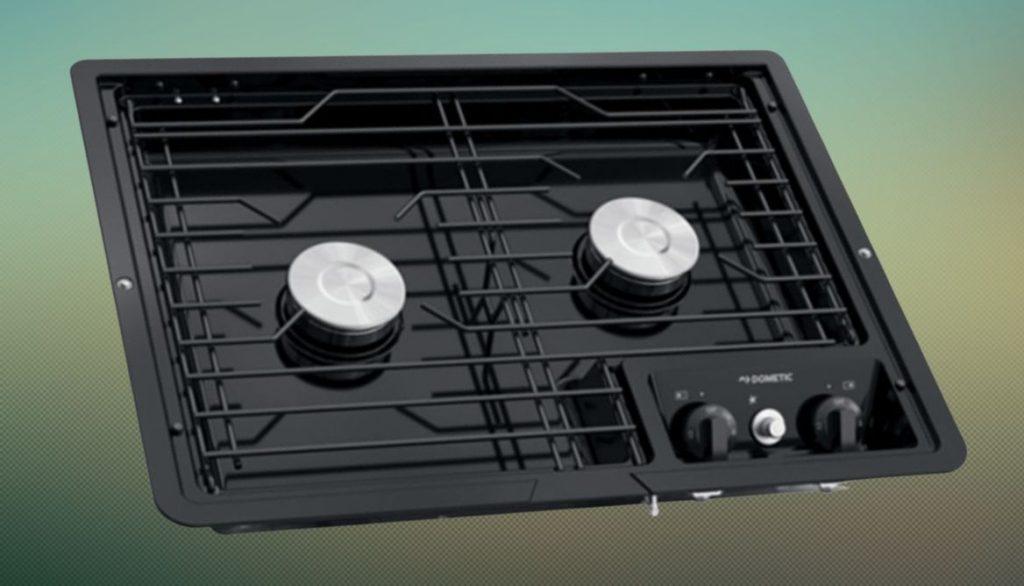
Fuel Source | Gas |
Installation | Fixed |
BTUs | 12,400 |
Burner Count | 2 |
Dimensions | 14.5 x 18.5 |
Weight | 11 lbs |
Price Range | Around $150 |
The Atwood Dometic D21-BPW stove is a two-burner propane stove designed to use vans. It features stainless steel construction for durability and two powerful 9,000 BTU burners for quick and efficient cooking.
It also features push-button electronic ignition for easy lighting and adjustable flame control for precise temperature control. The D21-BPW is designed to be installed on a flat surface and is easy for DIYers to install.
- The compact and lightweight design is ideal for campervans.
- The two-burner design offers great cooking flexibility.
- Easy to install and use. -Reliable construction and low maintenance.
- Includes an automatic electric spark ignition.
- Comes with a removable drip pan for easy cleaning.
- Affordable price point.
- Lack of power output, with a maximum of 10,000 BTU per burner.
- No oven option.
- Slightly noisy operation.
- Limited temperature control options.
- Small cooking surface area.
5. Coleman Portable Butane Stove

Fuel Source | Gas |
Installation | Portable |
BTUs | 7,650 |
Burner Count | 1 |
Dimensions | 20 x 12 |
Weight | 4.7 lbs |
Price Range | Under $75 |
The Coleman Portable Butane Stove is an excellent choice for campers looking for a reliable and affordable camping stove. The Coleman Portable Butane Stove has a powerful 7,650 BTU output, allowing you to quickly cook large meals.
It is a compact and lightweight design, making it ideal for campervans and camping trips It is also straightforward, with an adjustable burner to control the heat and a self-igniting push button.
- Lightweight and compact design are easy to pack and transport.
- It uses readily available butane fuel canisters, so there is no need to worry about running out of fuel.
- Heat output is adjustable, allowing for precise temperature control when cooking.
- Quick and easy to set up, with no special tools or expertise required.
- Butane canisters can be expensive, especially if used frequently.
- Small cooking surface is unsuitable for large meals or groups.
- Limited temperature control can lead to uneven or scorched food if not monitored regularly.
- Portability means the stove is not as stable as larger models, so it may be easier to knock it over accidentally.
6. Camp Chef Outdoor Oven
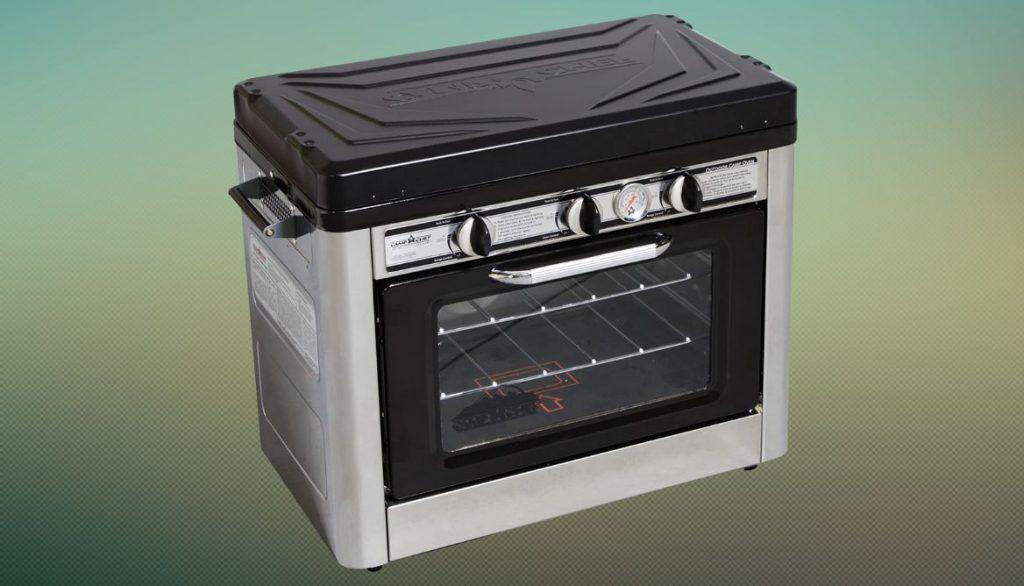
Fuel Source | Gas |
Installation | Portable |
BTUs | 18,000 |
Burner Count | 2 |
Dimensions | 18 x 24 |
Weight | 37.1 lbs |
Price Range | Under $400 |
The Camp Chef Outdoor Oven is one of the top selections for those seeking the most value for their money when it comes to campervan stoves.
This oven has a two-burner cooking system and an integrated oven that can be used to bake, roast, and broil. It also comes with a windscreen to protect the flame from the wind and a matchless ignition system for easy lighting, and it has a total of 30,000 BTU.
- Portable and lightweight, making it easy to transport and store
- It uses propane as fuel, making it easy to find and purchase
- Versatile cooking options with the ability to bake, roast, and grill
- It has a built-in temperature gauge for accurate cooking temperatures
- Includes a windscreen to help regulate heat and minimize flare-ups
- It can be a bit tricky to get consistent flame levels
- Relatively small cooking surface, making it challenging to cook for large groups
- Limited temperature range, making it difficult to cook certain dishes
7. Jetboil Genesis
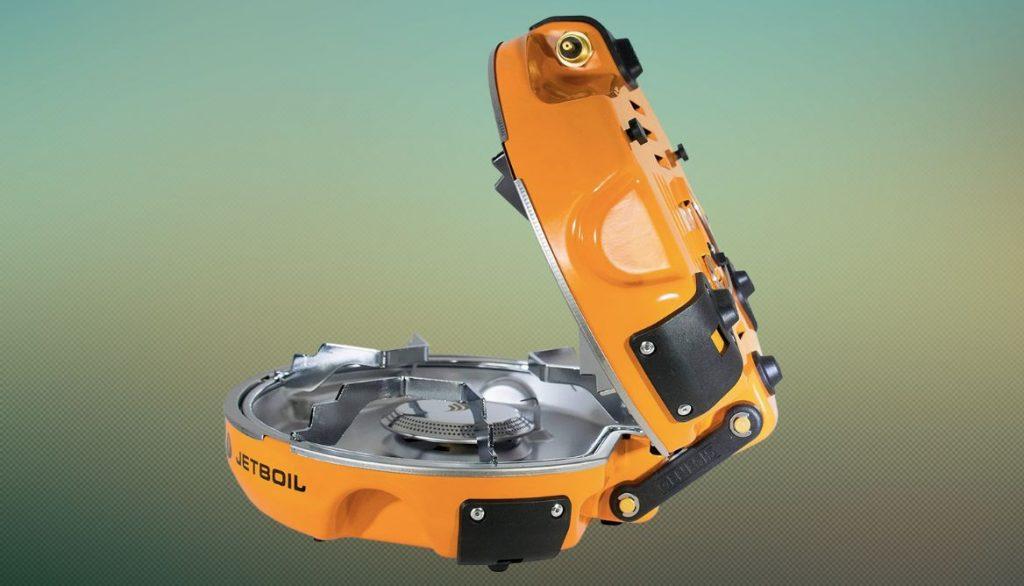
Fuel Source | Gas |
Installation | Portable |
BTUs | 10,000 |
Burner Count | 2 |
Dimensions | 10.3 x 10.3 |
Weight | 9.1 lbs |
Price Range | Under $400 |
The Jetboil Genesis is one of the best camp stoves available. It is a lightweight, compact two-burner stove for larger groups and families. It has a powerful output of up to 25,000 BTUs, so it can quickly boil water and cook food for up to 10 people.
The Genesis is easy to use and offers a wide range of temperature settings, from simmer to full blast. It also has a built-in windscreen and a heat exchanger to maximize heat efficiency and reduce fuel consumption. Its heavy-duty construction and reliable performance make it an excellent choice for campers and adventurers.
- Compact and lightweight, making it easy to store and transport
- Fuel-efficient and powerful, able to boil water quickly
- Easy to use and reliable, with an adjustable flame that allows you to control the heat output
- Compatible with most campervan stoves
- Relatively inexpensive compared to other camping stoves
- Not suitable for larger groups due to its smaller size
- It can be difficult to light and may require multiple attempts
- It does not offer the same level of portability as other camping stoves
- Not suitable for cooking large meals due to its smaller size
Propane Vs. Butane Vs. Electric Stoves
Propane, Butane, and Electric Stoves are all popular best camp stoves worldwide world. Each stove type has unique advantages and disadvantages, so deciding which is best for your needs can be challenging. In this comparison, we will look at the differences between Propane, Butane, and Electric Stoves to help you make an informed decision.
1. Propane Stove
A propane stove is one of the best choices for a campervan because it is portable and requires no electricity. Propane stove typically uses propane canister, which can be refilled or exchanged at most camping stores. It is also more affordable than an electric stove and is easy to use. The main downside is that it can be more dangerous than an electric stove because it uses an open flame.

2. Butane Stove
A butane stove is also one of the best camp stove for a campervan. It’s very similar to a propane stove and uses a butane canister, which is also widely available. Butane stove is also easy to use and requires no electricity.
The main difference is that butane stove have a higher heat output than propane stove, meaning it’s better suited for cooking larger meals. However, it is more expensive than a propane stove.
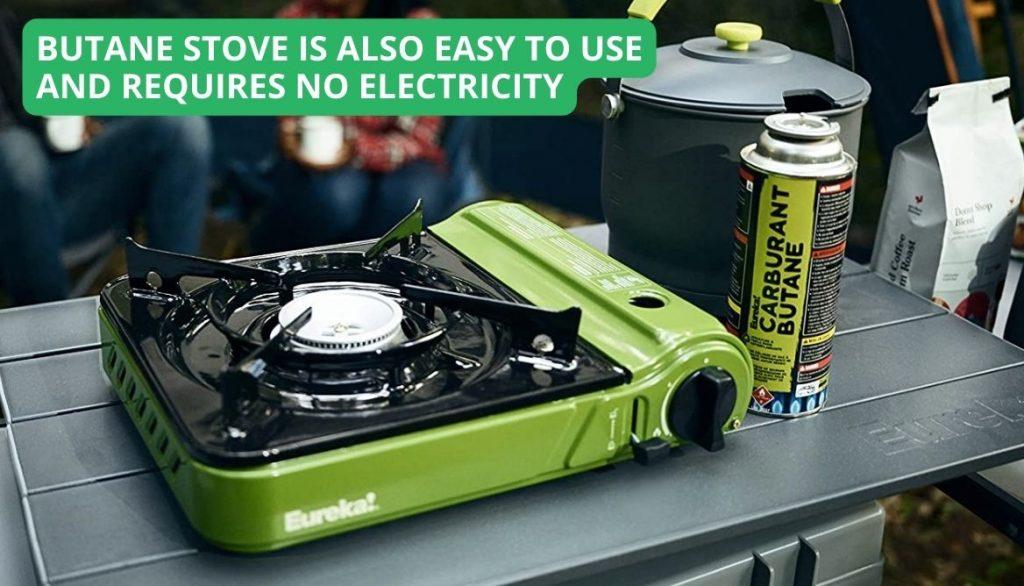
3. Electric Stoves
Electric stoves are the most reliable option for those looking for a campervan cooker. They require a power source, usually an outlet or generator, and provide precise temperature control and even heating.
The main downside to electric stoves is that they tend to be more expensive than propane stoves and must be maintained regularly. Additionally, they can be bulky and heavy.
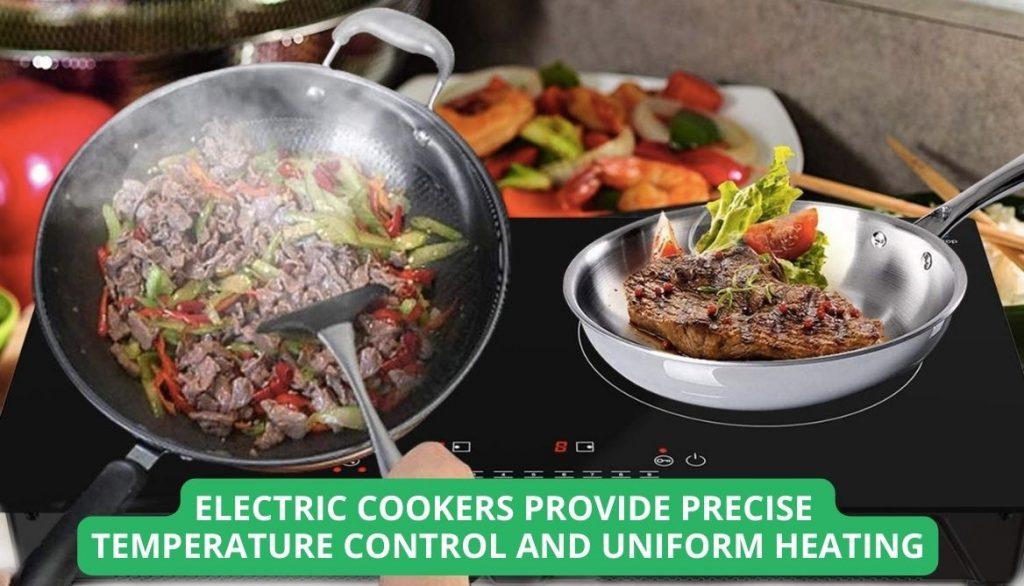
Things to Consider Before You Buy the Best Campervan Stove
Before purchasing a campervan stove, you should consider a few things. Let’s discuss an overview of all the different aspects of buying the best campervan stove so that you can make an informed decision.
Gas Type: Propane vs. Butane
- Heat Output: Butane produces more heat output per unit of gas than propane, making it the more efficient choice for a campervan stove. This means that a stove that runs on butane will require less fuel to generate the same amount of heat as one that runs on propane.
- Portability: Propane is much more widely available than butane, as it is easier to store and transport. This makes it the better choice if you plan to move your campervan stove around often.
- Cost: Butane is usually more expensive than propane, so if budget is an issue, propane may be the better option.
- Temperature Range: Propane can generate higher temperatures than butane, so it may be a better choice if you need to use your stove for tasks that require high heat.
- Availability: Butane is typically more difficult to find than propane, so if you plan to use your campervan stove in more remote locations, propane may be the better option.
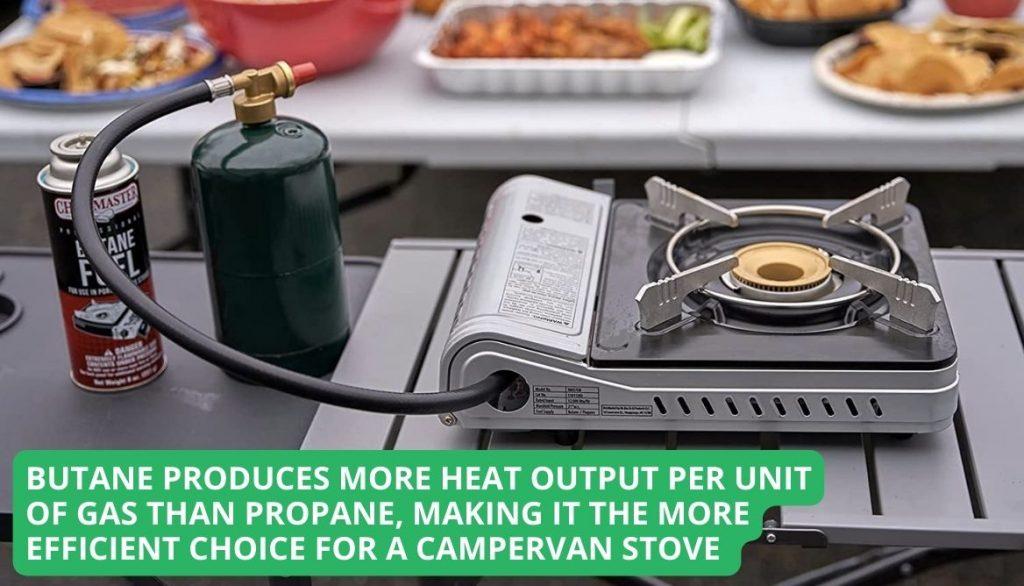
Size and Weight of Your Stove
Size and weight are two critical factors when considering which campervan stove to buy.
The size of the stove
The stove size should be proportional to the size of the campervan. If the stove is too small, it will not provide enough cooking capacity for a family or group, and if it is too large, it will take up too much space and be difficult to store.
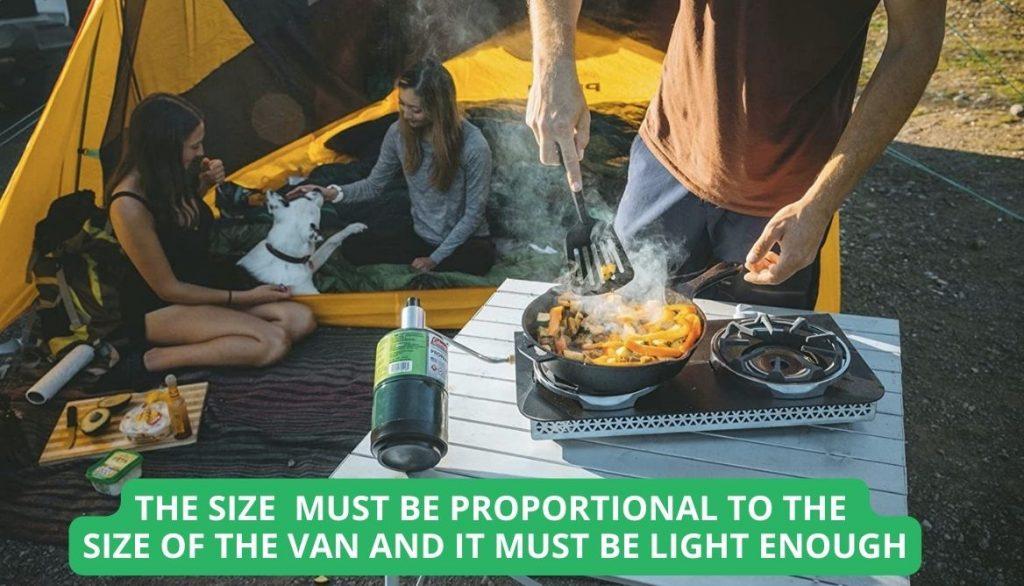
The weight of the stove
The weight of the stove is also essential to consider, as it will affect the overall weight of the campervan when it is in transit. If the stove is too heavy, it will impact the vehicle’s overall maneuverability and fuel economy.
Ideally, the stove should be light enough to be easily carried and stored but still have enough capacity to meet the occupant’s needs.
Type of Ignition: Matchless or Manual?
- Ignition Type: Matchless or Manual – Matchless ignition systems are more convenient and require little effort to light the stove. A matchless ignition system is powered by gas and is designed to light the stove with a single push of a button. You must use a match or lighter to light the stove with manual ignition systems.
- Safety: Matchless ignition systems are generally safer than manual ignition systems as they are less likely to cause accidental fires. Manual ignition systems require an open fire to light the stove, which can be dangerous when not used properly.
- Ease of Use: Matchless ignition systems are much easier than manual ignition systems. All you have to do is press the button, and the stove lights up. You must use a match or lighter to light the stove with manual ignition systems.
- Cost: Matchless ignition systems tend to be more expensive than manual ignionesis because matchless systems require more complex components and extra safety measures.
- Availability: Matchless ignition systems are more widely available than manual ignition systems.
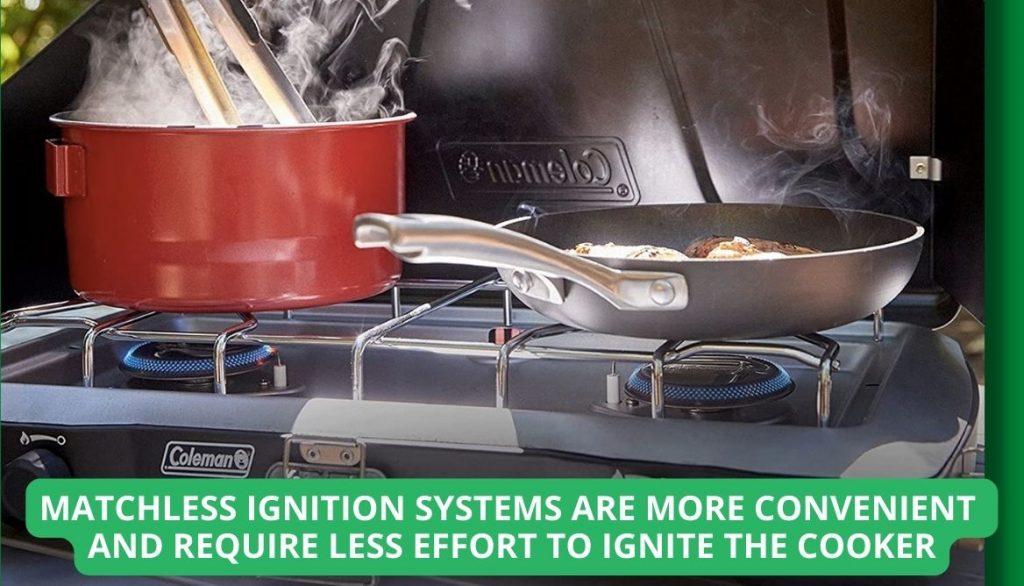
BTUs: Your Stove’s Burner Power
BTUs: BTUs (British Thermal Units) measure the power of a stove’s burners. The higher the BTU rating, the more heat the burner will generate.
- Heat Output: When choosing a stove, it is crucial to consider the heat output of the burners. Higher BTU ratings will mean faster heating times, while lower BTU ratings will take longer.
- Efficiency: Higher BTU ratings will generally mean more efficient stoves, as more heat will be generated for the same amount of fuel. 4.
- Fuel Type: Different fuel types will require different BTU ratings. For example, propane stoves usually require higher BTU ratings than electric ones.
- Cost: Generally, stoves with higher BTU ratings will be more expensive than those with lower ratings. It is essential to consider your budget when choosing the right stove for you.
- Safety: It is essential to ensure that the BTU rating of the stove is compatible with the size and type of the cooking vessel. Stoves with too high BTU ratings can be dangerous, as the intense heat can cause fires and other hazards.
Simmer Control for Cooking Finesse
Simmering is an essential part of cooking. You want to ensure your campervan stove has a precise heat control feature that allows you to adjust the temperature for cooking. Many stovetops come with a range of heat settings, including a low setting for simmering, and you should look for one that allows you to adjust it easily and quickly.

- Flame Size: The size of the flame is important when simmering, as you don’t want it to be too large and cause the food to burn. Look for a stove with adjustable flame sizes, so you can easily adjust it to a low simmer setting.
- Durability: When simmering, ensure the stove is sturdy and durable, as you want it to stay dry and dry. Look for a stovetop made from high-quality materials so that it will last you for years to come.
Waste Considerations for Fuel Canisters
When purchasing a campervan stove, it is essential to consider the fuel canister requirements. Many camp stoves require specific fuel canisters designed to fit the stove, so it is necessary to research which fuel canister is compatible with the stove before purchasing.

Additionally, when choosing a fuel canister, it is crucial to consider the environmental impact of the fuel and the disposal of the canister. Some fuel canisters are not recyclable and may require special particulars, so it is essential to be aware of the waste considerations associated with the fuel canister before making a purchase.
Number of Burners
The number of burners should be considered when considering the best campervan stove. More burners allow for more cooking options, while fewer burners may be better for a more compact setup. Ultimately, the number of burners should be based on personal preference and the amount of kitchen space available in the campervan.
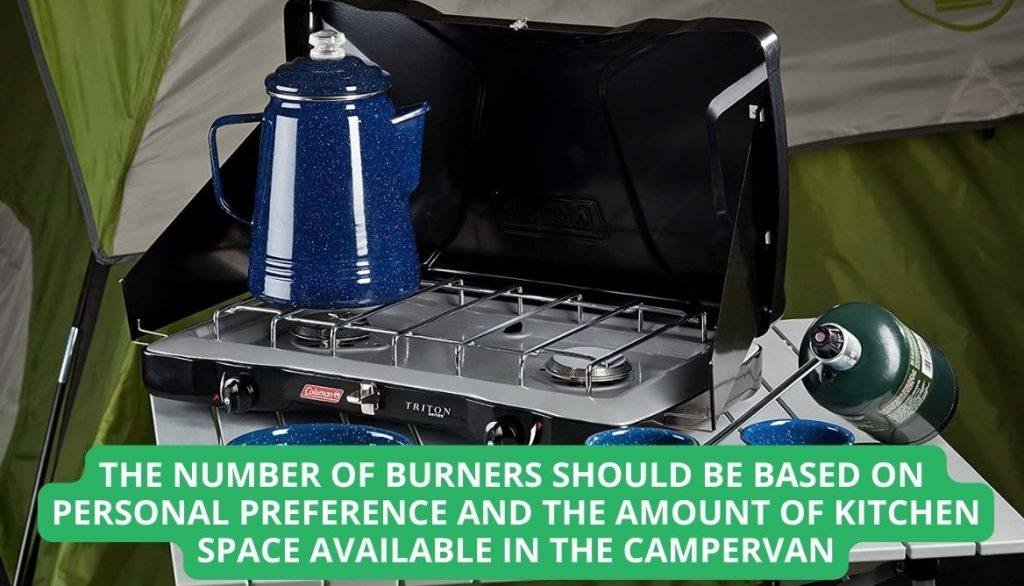
How Big of a Tank Should I Get for My Campervan Stove?
Generally, a larger tank is recommended for a larger van, as well as if you plan to do a lot of cooking or heating. For smaller vans and lighter usage, smaller tanks may be a better choice. It is also important to know the type of fuel your stove uses, and make sure you get a tank that is compatible.
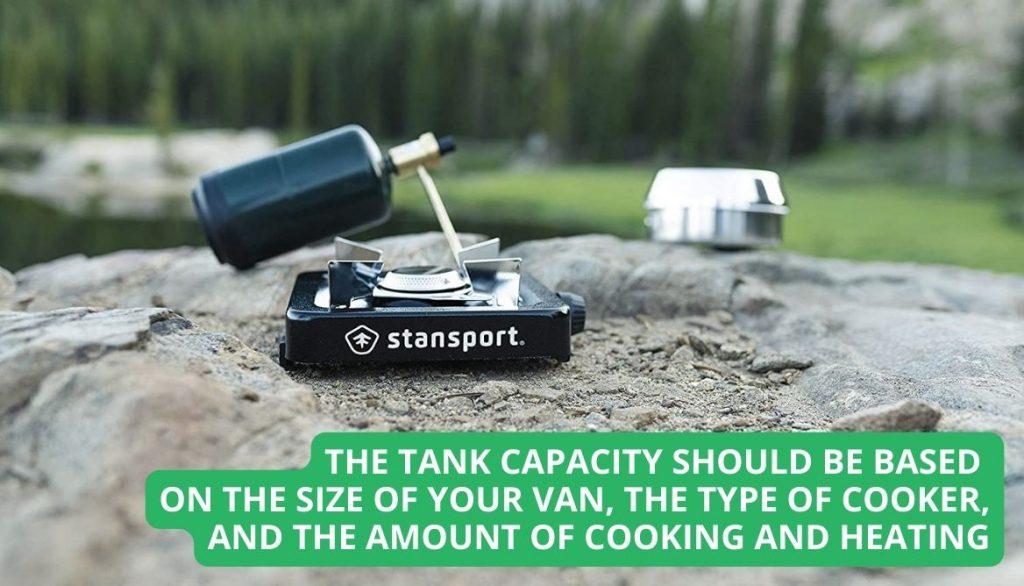
Propane tanks are the most common for campervan stoves, and they can come in a variety of sizes, from a small 4-gallon tank to a large 40-gallon tank. Ultimately, the size of the tank you choose should be based on the size of your van, the type of stove you have, and the amount of cooking and heating you plan to do.
Where to Put Your Camper Van Stove
Camping stoves are essential in a camper van, providing a reliable and safe way to cook meals. We will guide where to place your campervan cooker best to ensure safety and convenience.

Airflow
Airflow is important when deciding where to place your camper van stove. Proper ventilation and air circulation will ensure that the stove is safe and efficient. Many people opt to install the camper van stove near a window or vent, as this provides excellent airflow for the stove.
Surroundings
The best place to put your camper van stove is a well-ventilated area away from any flammable objects or materials. Ensure to keep the stove away from windows, curtains, and other potential sources of drought. Additionally, ensuring that you have a fire extinguisher nearby in an emergency is vital.
Accessibility
Accessibility is an essential factor to consider when determining where to put your camper van stove. You need to be sure the camp stove is installed in an area that is easy to get to and use and that it is out of the way of any other objects that might be in the way.
Additionally, you should ensure adequate ventilation and that the camper van stove is positioned in a way that is safe and convenient for you to use.
Van Life Stove Accessories
When it comes to Van Life, one of the most important accessories is the stove, allowing you to cook meals and make hot drinks during your travels. To make the most of your Van Life experience, it is essential to have the right camper van stoves accessories to make life on the road easy and comfortable.
1. Propane Adaptor Hose
Van life stove accessories often include propane adaptor hoses, which allow for the connection of a small propane tank to a stove. These hoses are usually made of a durable material such as stainless steel or rubber and are designed to be weather and wear resistant. Propane adaptor hoses are essential to any van life stove setup, allowing for propane fuel’s safe and efficient use.
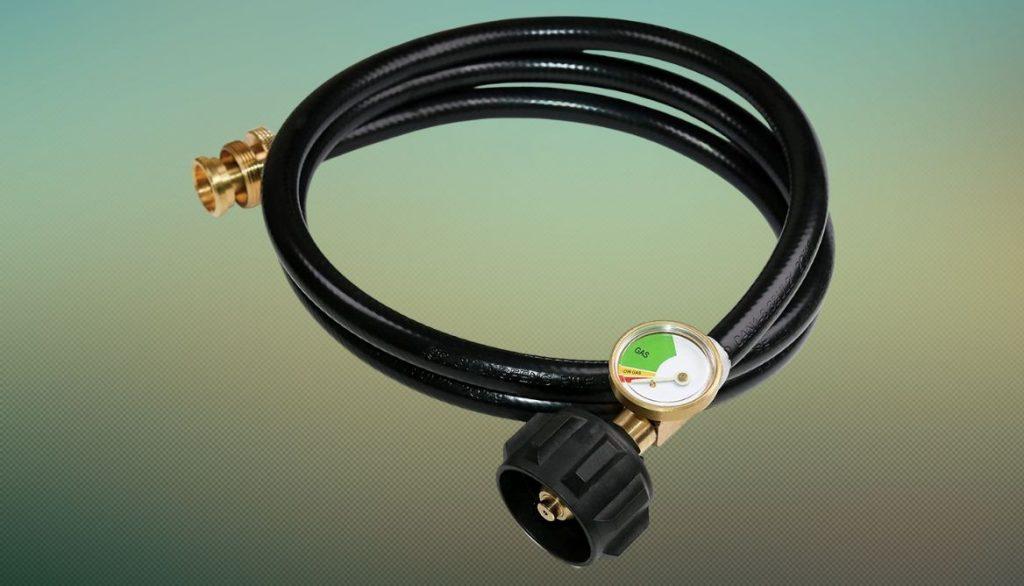
2. Propane Regulator
Propane regulators are essential stove accessories for van life and are used to regulate gas flow from the propane tank to the camp stove. They are designed to maintain a safe and consistent gas flow so that the stove functions efficiently and safely.
When choosing a propane regulator for your van life stove, selecting one compatible with the stove and the type of fuel it uses is crucial.
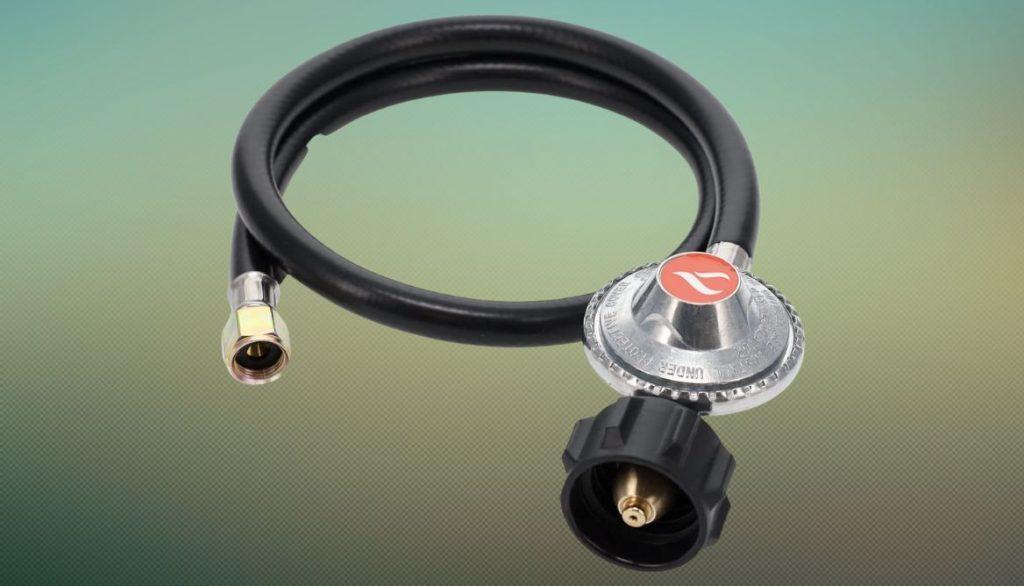
3. Propane Tank Tie Downs
Propane tank tie-downs are an essential van life camp stoves accessory. They help secure the tank and ensure it stays safe and secure while the van is in motion. These tie-downs are typically made of nylon webbing with adjustable cinch buckles and are designed to fit most propane tanks.
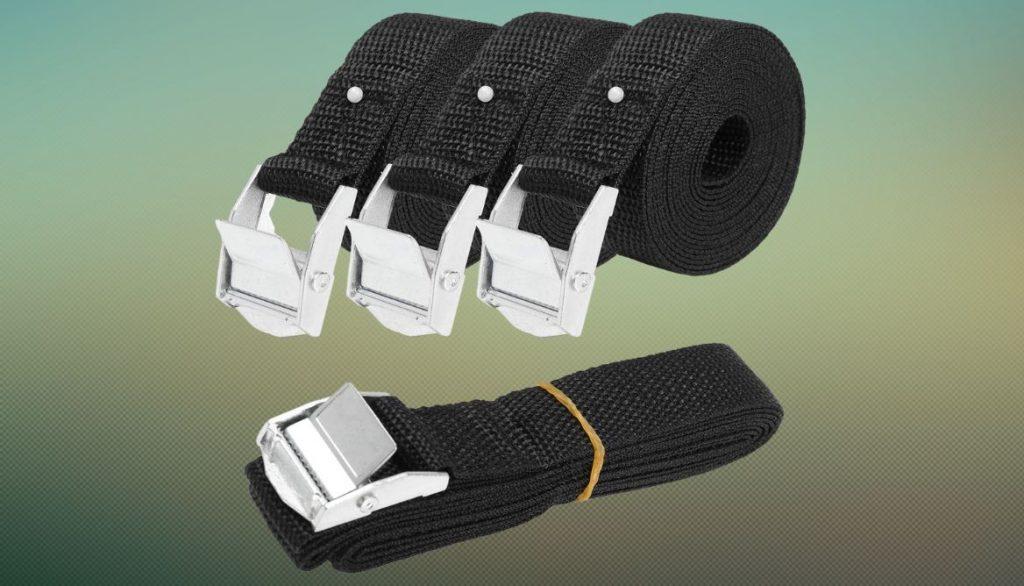
4. 10 inch Cast Iron
Venturing into van life with cast iron camp stoves is a great way to ensure a delicious and hearty meal anywhere, anytime. 10-inch cast iron pans are very versatile and perfect for cooking various dishes. They are long-lasting and easy to clean, making them an ideal choice for van life stove accessories.

5. Roof Fan
Van life stove accessories often include roof fans to help improve air circulation within the vehicle. Roof fans can help reduce the amount of condensation that can develop from the heat of the stove and the humidity of the air. Roof fans can also help cool the vehicle on hot days, making the van life experience more comfortable and enjoyable.

How to Cook in a Van Camper
Take a look for tips how to cook in a Van Camper:
- Clean surfaces before and after cooking.
- Make sure to use a fire extinguisher in the event of an emergency.
- Always use proper ventilation when cooking inside the camper van.
- The stove should be securely mounted and secured to the countertop.
- Ensure to use a propane tank with an automatic shut-off valve.
- The propane tank should not be near any heat sources.
- You should use non-flammable materials for cooking surfaces and countertops.
- When lighting a stove, use a match or lighter, not an open flame.
- Ensure to turn off the stove when not in use and keep it away from flammable items.
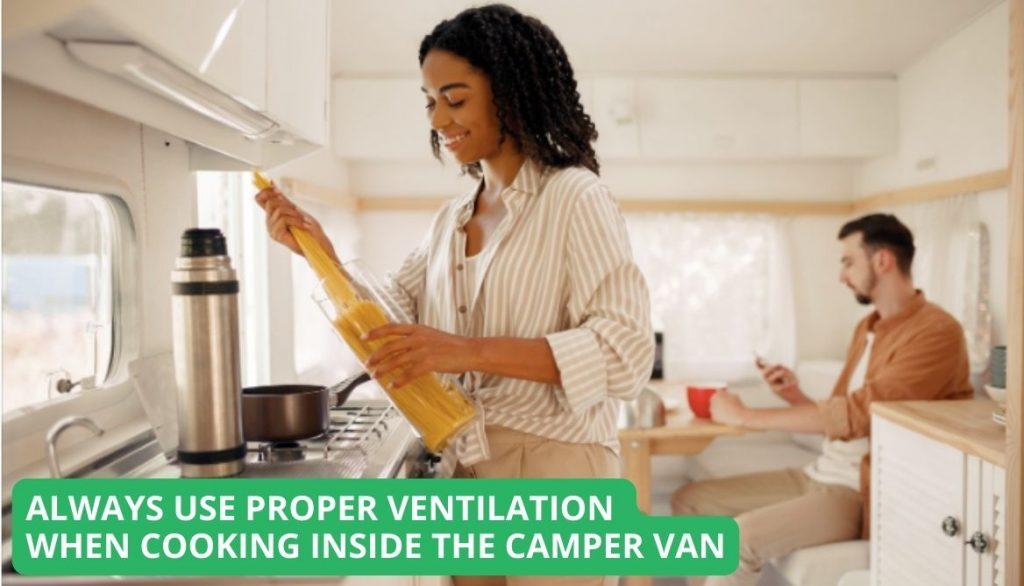
FAQ
What is the most efficient camp stove?
The most efficient camp stove depends on the type of fuel you’re using, as well as your cooking needs. For example, a liquid fuel stove is the most efficient for large groups and cooking various meals. A canister stove is the most efficient choice if you’re looking for a lightweight and compact stove.
What type of camping stove is best?
The best type of camping stove depends on your needs and preferences. For instance, a liquid fuel stove is a good choice if you need a reliable, powerful stove, while an electric stove is suitable for lightweight, easy-to-use options. A multifuel stove provides a good compromise if you want the best of both worlds.
Can you put a stove in a camper?
Yes, it is possible to put a stove in a camper. Most campers have a kitchen area that is equipped with the necessary connections to accommodate a stove. Depending on the size of the camper, the stove can be a full-sized range or a more compact version.
How do I choose a camping stove?
1. Consider the size and weight of the stove, as well as the type of fuel it uses. 2. Research different brands and models to determine which best suits your needs and budget. 3. Ask yourself if you would prefer a single-burner stove, a two-burner stove, or a multi-fuel stove.
Which stove uses less electricity?
Electric coil stoves use less electricity than induction stove. This is because electric coil stoves use direct heat, while induction stoves use electromagnetism to generate heat. Gas stoves also use less electricity than either electric coil or induction stoves.
Which is the best stove for camperxvan?
The Camp Chef Everest 2-Burner Stove is an excellent choice for campervan cooking. It features two 22,000 BTU burners, a matchless ignition system, and a three-sided windscreen for added protection against wind.
Conclusion
A stove for a campervan is an essential accessory. The right stove and accessories can make any camping experience more enjoyable. Investing in the right stove and accessories will ensure a safe and comfortable camping experience. What do you think is the best stove for campervan? Let us know in the comment section below.

I`m a current Law Enforcement Officer working within the Counterterrorism Bureau in New York State. I have been Camping for over 20 years. My styles of camping include tent, car, truck, van, and RV travel trailer. I have a YouTube channel where I teach all types of camping with an entertaining method: https://youtube.com/@TheSmallsRVAdventures






